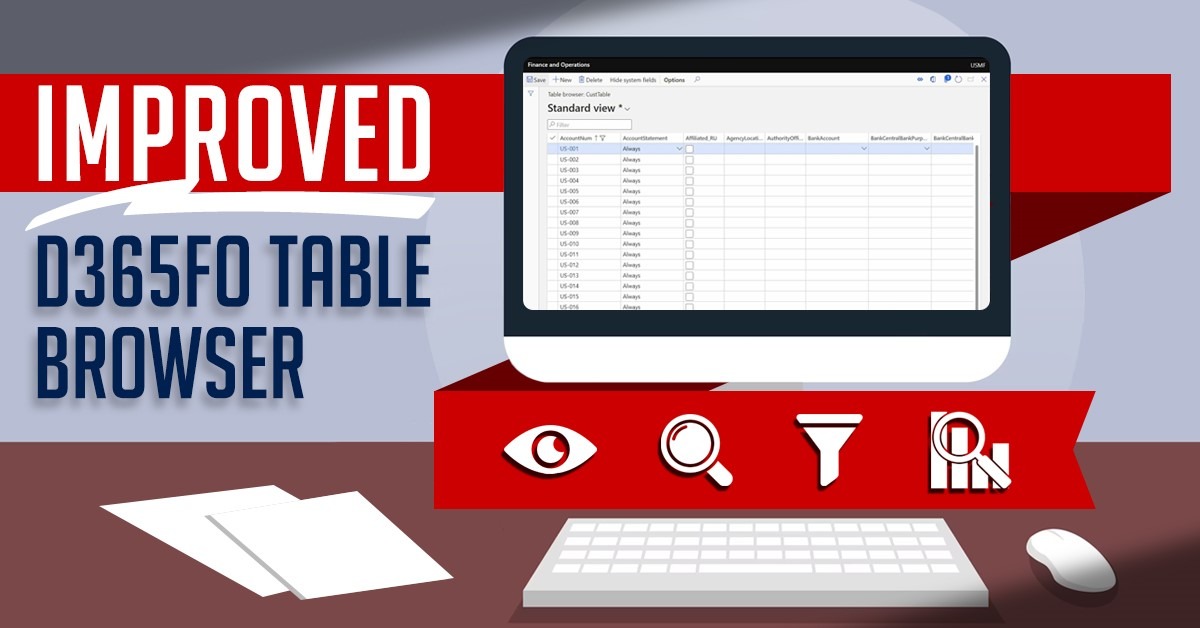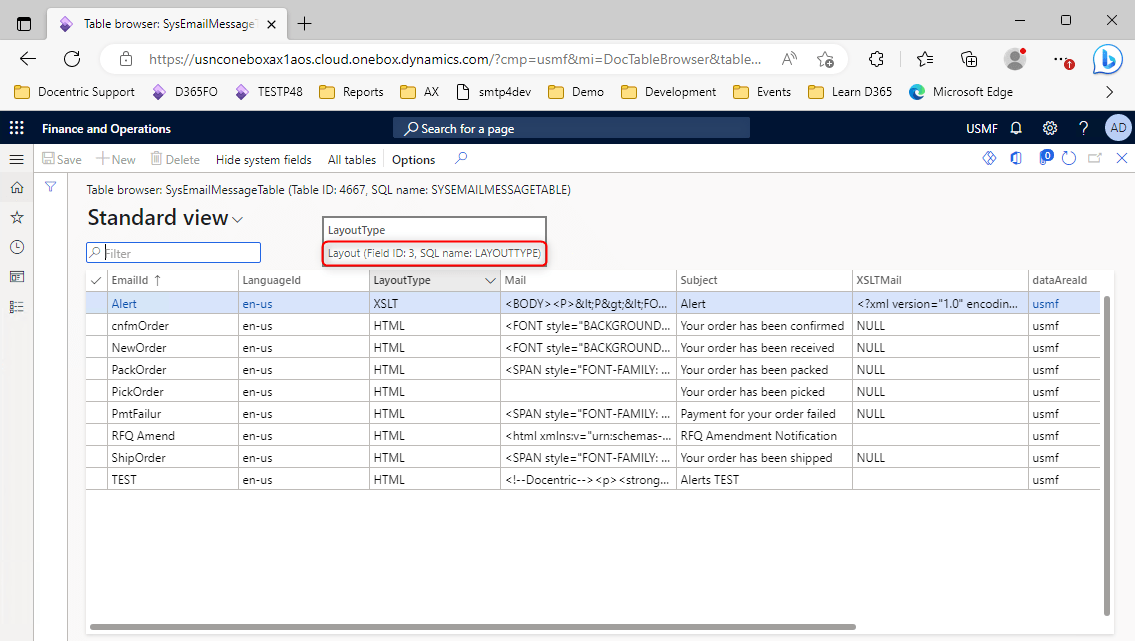
D365FO Table Browser is a utility form that shows the records from a D365FO table or view specified as the URL parameter. Form shows table records in a grid, so users can search, filter and sort the data, export to Excel, create alert rules on fields from "line tables", e.g. Purchase lines (which otherwise can't be done in original form, e.g. the All purchase orders form), attach the attachments to table records, etc.
Furthermore, administrators have the additional possibility to create, update and delete records on development environments (Tier 1).
We can open the Table Browser form by invoking a "hidden" menu item SysTableBrowser using a direct link and specifying the table/view as the URL parameter.
https://<environmentURL>/?mi=SysTableBrowser&tableName=<tableName>
Docentric Table Browser
As the standard D365FO Table Browser restricts updating the data in non-development environments (only supports read-only mode), Docentric introduced Docentric Table Browser whose primary purpose was to edit (Create, Update, Delete) certain Docentric system tables in UAT and production environments.
Open a D365FO table in Docentric Table Browser
Launch Docentric Table Browser for a specific D365FO table or view by using the following URL:
https://<environmentURL>/?mi=DocTableBrowser&tableName=<tableName>
Show Table ID, Field IDs and SQL names
The Docentric Table Browser form, unlike the standard Table Browser, shows additional information of an opened D365FO table (or view):
- The corresponding Table ID and SQL name are shown in the form caption.
- For each table field Field ID, SQL name and label are shown in the field help text.
Search D365FO tables by Table ID, Table name or SQL name
We also added a new menu item All tables that shows the data from SysTableIdView view.
To demonstrate how you can benefit from the All tables form, let's consider the example of Document Management attachments. The metadata associated with these attachments is stored in the DocuRef table. To access and explore this table using the Docentric Table Browser, navigate to:
https://<environmentURL>/?mi=DocTableBrowser&tableName=DocuRef
The DocuRef table contains information about the table and records associated with each Document Management attachment. This relation is established through the RefTableId and RefRecId fields. To identify the related table, use the value from the RefTableId field, click the All tables menu item and filter the list of all tables by the RefTableId value.
In the example below, we can see that this attachment is found on the SalesTable table.
Editing all table records (in development environments)
Starting with Docentric version 3.4.8, a user with the System Administrator role can use the Docentric Table Browser to edit and delete any table record in development environments.
Editing Docentric system tables (on all environments)
As we mentioned above, Docentric Table Browser allows CUD operations (Create, Update, Delete) on some Docentric system tables also in UAT and production environments. These are the special parameter tables that are normally empty but can be used in special cases:
- DocentricEngineSetting - Hidden Docentric document generation engine
- DocFeaturePreview - Enable pre-release features
- DocTraceParam - Enable Docentric tracing (per category and user)
- DocTraceTable - Contains data provided by the Docentric tracing feature (not a parameter table)
- DocSystemSetting - Hidden system settings
Quick access to Docentric Query Browser and Docentric Label Browser
In Docentric v3.4.9, we introduced Docentric Query Browser for building queries and ad-hoc reporting, and Docentric Label Browser for searching for labels and translations in any language – all directly within D365FO.
You can open both browsers from Docentric Table Browser.


 Tags:
Tags: 





This is such a stealthy but awesome feature (and new to me)! Thank you for this option and how-to article.
I need a bumper sticker that says I <3 Docentric =)
Thank you for the kind words! We are glad you found the feature helpful – it is one of the hidden gems. 😊 And we really love the idea of a bumper sticker! Maybe we should make one happen!